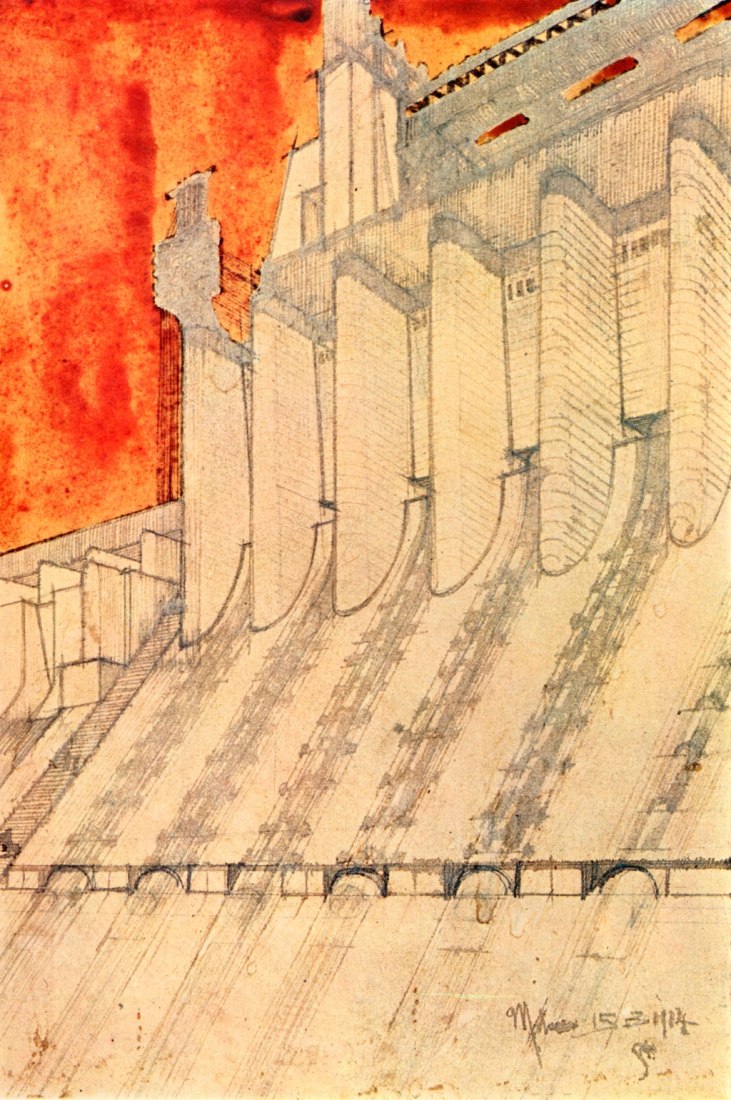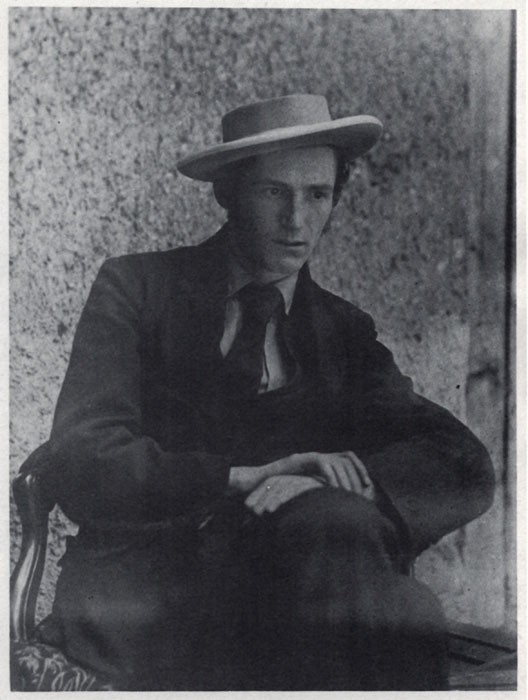The exhibition at La Triennale has been designed not just for some small, specialist group of architects but rather for the general public, in order to make known the work of the man who wrote the Manifesto of Futurist Architecture, published in 1914.
A considerable corpus of original drawings will go on display for the first time in Milan. From the Pinacoteca di Como and from private collectors, they show the Città Nuova, a project for a great “New City” of the future, on which the young Sant’Elia was already at work in April 1914. These designs were originally intended for the exhibition by the Nuove Tendenze group that was put on in the rooms of the Famiglia Artistica Milanese in Via Agnello, Milan.
Taking inspiration also from the most advanced Art Nouveau artists, but without ever losing touch with the world around him, Antonio Sant’Elia created a jigsaw puzzle of urban forms on paper, in which the connections – bridges, covered paths and walkways – have the same importance as the houses, squares and stations.
This Città Nuova, later renamed Città Futurista (“Futurist City”), has a complete nervous system of quivering threads that lead vehicles on rails, propelling freight elevators and treadmills, lighting lamps and advertising signs: a metropolis that lives on electricity, like a vast hive in which the city is constantly on the move.
The exhibition retraces Sant’Elia’s brief human and professional existence in four sections, curated by Alberto Longatti, Luciano Caramel, Ornella Selvafolta, and Fulvio Irace.
The first room, curated by Ornella Selvafolta, looks at the setting in which Sant’Elia received his education and training. In the early twentieth century, Milan was going through a profound transformation in terms of housing and urban planning, within a network of international communications and at the forefront of industrial development and technology. Despite the economic and social crisis of the late nineteenth century, the dynamic, transformational processes under way in the city were creating a climate that gave Sant’Elia and other Futurist artists a strong sense of modernity.
The second and third rooms, curated by Alberto Longatti with Luciano Caramel, contain about 50 original drawings (on loan mainly from the Pinacoteca Civica in Como) with site-specific models made by students of the Politecnico University of Milan.
The third section, curated by Fulvio Irace with Matteo Agnoletto, examines the direct and indirect legacy of Sant’Elia’s work on the urban vision of the twentieth century and on the new scenarios opening up in the twenty-first. The underlying theme is the inextricable link with the city of Milan and with today’s metropolis, a city that builds the future – the “città che sale” – and that races ahead with boundless energy. It is itself Sant’Elia’s vision come true. The room ends with a totem installation by Alessandro Mendini, the last explicit tribute to the great master of Como.
The exhibition at La Triennale is part of a broader, wide-ranging programme of celebrations, with a series of other important events. These will include an exhibition at the Pinacoteca Civica, promoted by the Assessorato alla Cultura of Como, and an international conference in Florence, promoted by the University and the Museo del Novecento in Florence, to be held on 2 and 3 December 2016. An exhibition will also be put on by the Order of Architects of Como.
The Antonio Sant’Elia. All’origine del progetto exhibition at the Pinacoteca di Como (24 November 2016 – 8 January 2017) will act as an introduction to Sant’Elia’s studies. A selection of drawings made in 1913 shows the pure architectural forms that led to the creation of his Città Nuova project. To illustrate this work in the round, the drawings are accompanied by three-dimensional models, specially made for the occasion, which provide a much clearer visual idea of them.
The Order of Architects of Como is also showing a reinterpretation of the War Memorial of Como, in the form of short films and essays. The show investigates the events that led up to the construction of the memorial, based on Sant’Elia’s drawings and on studies by Prampolini, through to the design by Giuseppe Terragni. It tells the story of this unusual architectural and artistic creation, which brought together the current of Futurism and that of Rationalism in an iconic structure that is still a major feature of the Como landscape.
































